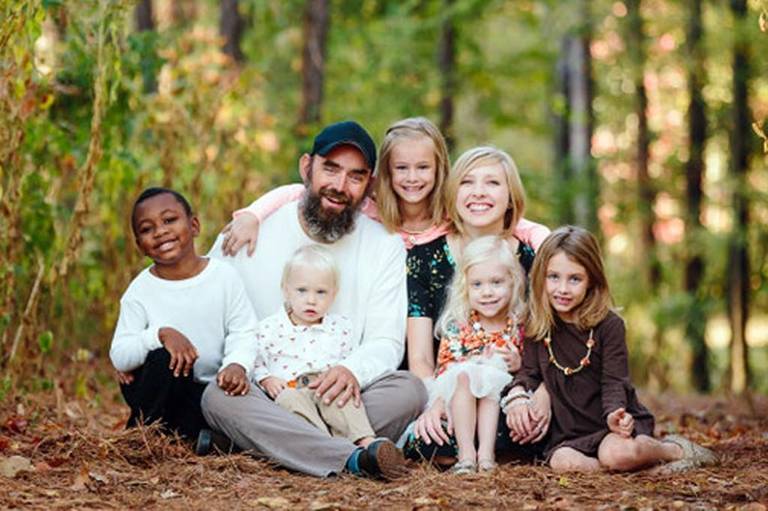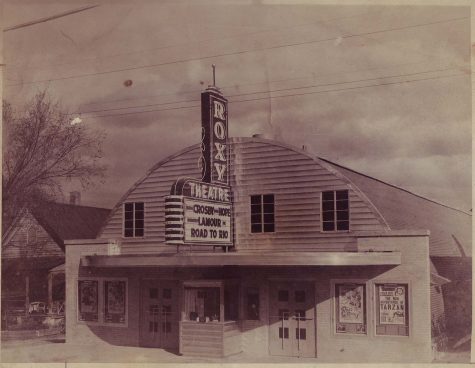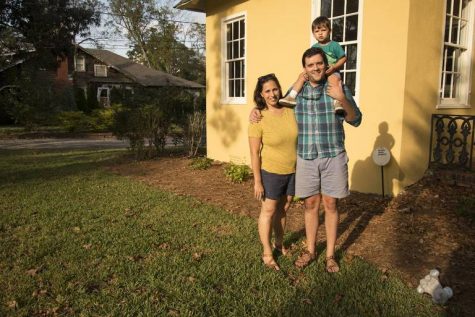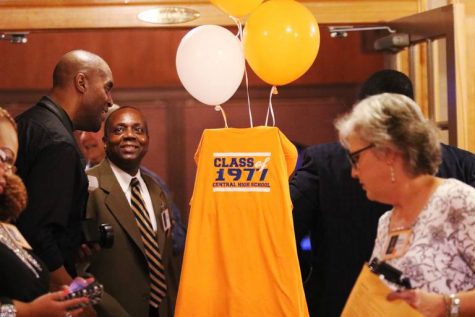Multiracial families report mixed results with school choice in Macon-Bibb County
Christy and Tripp Freeman have lived all over the South, from Texas to Tennessee to Atlanta, and now they’re in Macon.
They have made a family here with five children, but they are not a typical one. The Freemans are white. Two of their children are biological. Three are adopted and, of those, Timothy, the oldest boy, is black.
Elle Garrison, a Maryland native, has created a unique family of her own in Macon. The white, single mother of four has two foster and two adopted children — three black sons and a daughter who is half white and half Latina.
These two multiracial families have a particular perspective on education in Macon-Bibb County, where skin color correlates strongly to where many children go to school. Both families have struggled at least as much as any others in deciding where to send their children to school.
When the Freemans moved to Macon, they say they felt a distinct difference compared to other places they had lived.
“It was like we had stepped into the 1950s,” Christy Freeman said. “It seems like blacks and whites kind of stick to their own in Macon.”
As an example, Freeman recalled a time when a classmate of her daughter Anna told her that Timothy, Anna’s black adoptive sibling, could not possibly be her brother.
Garrison said she perceives the same racial divide the Freemans feel.
“I grew up in Maryland. I’m not even really Southern,” Garrison said. “It’s like 1960 in Macon. It’s so segregated.”
Garrison had imagined that Macon would be a good place to raise black children, because they would be around so many other people who look like they do.
“While that is true, Macon is the worst place to have a transracial family or be black,” she said.
Both families said they had strong intentions to raise their children in the public school system. At first.
“In Bibb County schools, there’s some trouble there. They’ve got a bad rep, … but if everybody pulls out, it’s no good,” Tripp Freeman said. “We’re putting our kids on the line.”
Christy Freeman added, “I started out so passionate about having our kids in the public school system because how else is it going to change? If your kid’s not there, then what reason do you have to be invested in it?”
The Freemans live near Ingleside Avenue and are zoned for Taylor Elementary, where they first sent their children. The public school scored a 64.9 on Georgia’s 2016 College and Career Ready Performance Index, which takes into account factors such as standardized test scores, student growth on those tests and graduation rates. According to the index, Taylor students performed slightly better than the Bibb elementary school average of 61.7, but below the statewide elementary average of 71.7. And it was significantly below Bibb’s highest performing elementaries, such as Springdale at 91.4.
Freeman said she thought being part of the Parent Teacher Association could help improve things, but the experience left her feeling discouraged.
“I could go to a meeting and there’d be like four parents there,” Freeman said. “I just felt so alone.”
Both Freeman and Garrison said the issue was not that their children were failing, but that they were not receiving the attention needed to excel, a problem they attributed to overcrowding in the classroom.
Michelle, the eldest Freeman child, was a good student, according to her mother. When it became obvious that she was not going to be a child who struggled, her teacher at Taylor allowed her to help a special-needs student, much to the initial delight of her parents.
“This is great. This is why I wanted them in public school,” Christy Freeman remembered thinking. “I want them to see that there are kids who are different.”
Then Michelle’s grades started to slip.
“She was getting bored,” Freeman said. “She wasn’t being challenged.”
Garrison encountered a similar problem. She bought a house on Cheryle Anne Drive so that her adoptive half-Mexican daughter, Emma, could attend school at Springdale Elementary. Springdale is a higher-rated school, but similar to Michelle Freeman’s experience, Emma was not receiving much individual attention, according to her mother.
“She’s not the kid who’s failing, so they get a lot of extra help, but she’s not the kid who does it one time and then she just learns it,” Garrison said. “She’s in that middle area where she wasn’t thriving, but wasn’t struggling enough to get help.”
Seeking alternatives
The Freemans and Garrison both decided to take charge of their children’s educations. They made the move to alternative institutions. The Freemans moved their daughters and eldest son to the Academy for Classical Education, while Garrison took Emma to First Presbyterian Day School.
Part of the decision for both parents was the perception in some quarters that Bibb County schools just aren’t that good. Garrison said she was told that moving her children to private school, particularly around middle school age, was just part of what happened in Macon.
“I panicked more than anything. You hear all these voices telling you that everyone goes to private school and, honestly, I bought into that. I think in my head she was struggling more than she actually was,” Garrison said.
Christy Freeman expressed a similar sentiment.
“It’s all about perception. Maybe our perspective was wrong. Maybe our kids were doing fine at Rosa Taylor,” she said.
The Freemans, overall, are pleased with their ACE experience. They said their girls have been challenged in the classroom, and they are experiencing some of what the parents wanted for their children all along: diverse classrooms.
While nearly a quarter of all the white children attending Bibb County schools are concentrated at ACE, Michelle Freeman said almost half of the students in her class are people of color. Christy Freeman said an overwhelmingly white school was not necessarily what they wanted for their children, and they have been pleasantly surprised at ACE.
“A friend of mine was worried about her son being the only black kid at ACE, because that’s how people talked. ‘Well, you know, it’s all a bunch of rich white kids.’ That’s not it at all,” Christy Freeman said. “I want (Timothy) to know people that look like him and understand the culture that he biologically comes from.”
Still, Freeman said ACE isn’t as diverse as she’d hoped for, especially considering the demographics of the broader community.
“I thought (ACE) was going to be in the heart of Macon, and that it would be easily accessible to all students,” she said. “I was so disappointed when they bought a building way out back roads.”
ACE is located in the predominantly white and relatively affluent area of north Macon-Bibb County. Freeman said she imagines many families from the less white and less wealthy parts of the county might not be able to send their children to ACE because it’s so far away, and the school does not provide bus transportation.
According to Georgia Department of Education statistics, ACE draws the overwhelming majority of its students from areas north of the city center.
Laura Perkins, ACE’s co-founder and principal, said her decision to locate the school in north Macon had nothing to do with household incomes. Being a charter school, ACE is funded in part by private investors, and Perkins said her investors’ primary consideration when selecting a site was whether it would have enough free space to build sports facilities and handle other expansions.
Perkins said she tried for a more central location, looking at spaces such as the old Alexander IV Elementary and A.L. Miller buildings, but found they simply weren’t viable for the school’s needs.
“Our original goal had been to find property more centrally located, but in spite of looking everywhere, we simply couldn’t locate property that could be easily rehabbed and had adequate space for growth,” Perkins said.
Garrison said she was reluctant to choose FPD — not because of the school’s location or the quality of the education, but rather what she believes the school represents.
“Most of the history of the private schools was to maintain segregation,” she said. “That was convicting for me.”
Private schools such as FPD, Tattnall Square Academy and Windsor Academy were established around the period of court-ordered integration in the 1960s and ‘70s.
Garrison thought seriously about moving her daughter Emma out of FPD and sending her to Howard Middle School this fall, but ultimately chose to keep her at FPD, in part to minimize disruption in her daughter’s life. She said she’s had productive conversations with FPD leaders about these issues.
“They do have a strong desire for diversity and are doing things to make FPD more appealing to minorities,” she said. “I still feel conflicted about private school and I know we need more private school kids in public schools to help (Bibb) schools thrive.”
Christy Freeman expressed the same concern: “I’m wondering if I’m contributing to the problem by having my kids in ACE and not having them in Rosa Taylor,” she said.
Both mothers said they trace those opinions back to their adoptions of children of color.
“Adopting a black child or a child from another race will commit you to racial reconciliation for the rest of your life,” Freeman said, quoting from the book “Bloodlines” by the white, Christian theologian Don Piper. It’s a book she said she read soon after adopting her son Timothy.
She added, “We had our own prejudices, but having a black son has really forced us to see things from a different perspective.”







